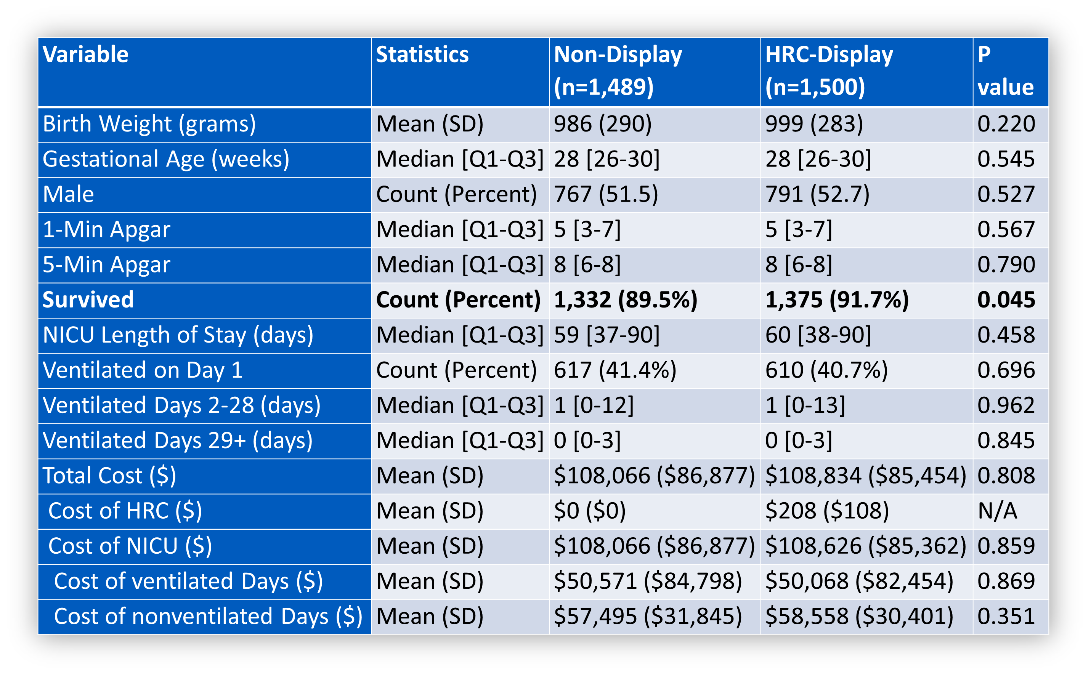Cost-Effectiveness Analysis of Heart Rate Characteristics Monitoring to Improve Survival for Very Low Birth Weight Infants
William King MS1, Waldemar A. Carlo MD2, T. Michael O’Shea MD3, Robert Schelonka MD4
1Medical Predictive Science Corporation, Charlottesville, VA, wking@heroscore.com
2University of Alabama at Birmingham, Birmingham, AL
3University of North Carolina, Chapel Hill, NC
4Oregon Health Sciences University, Portland, OR


